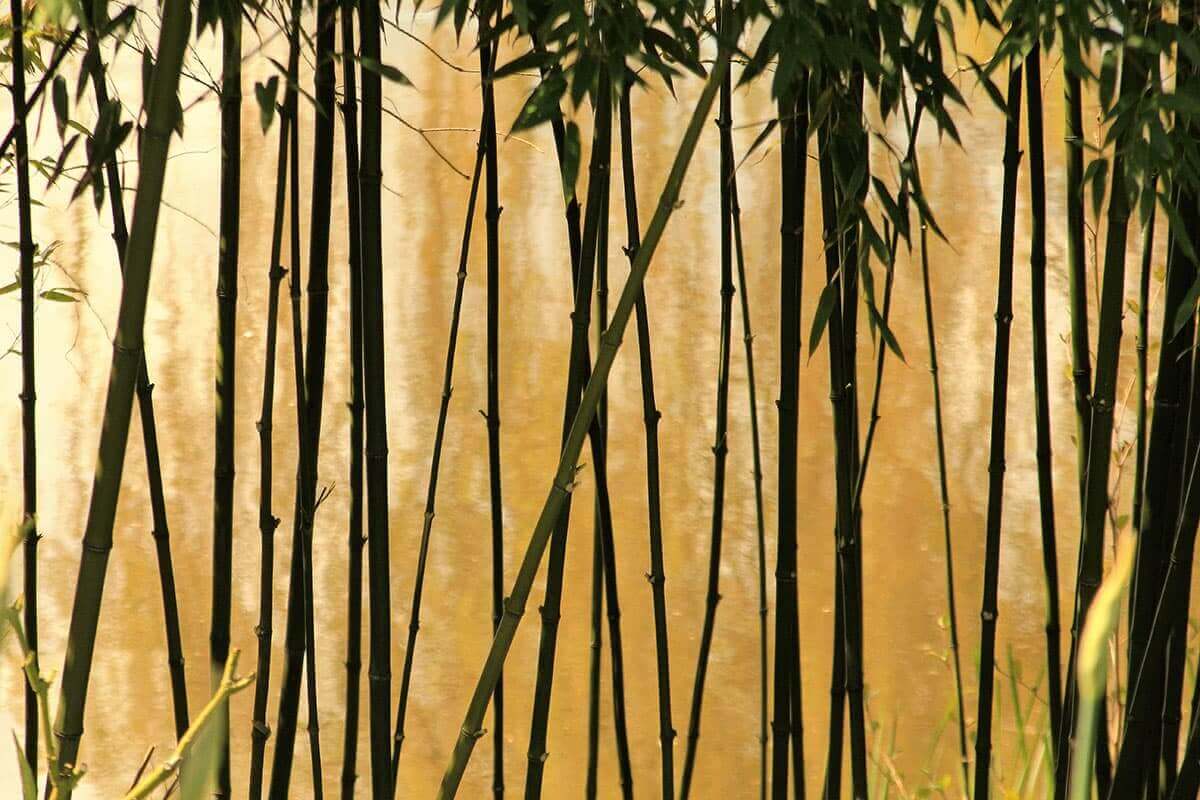Product Design with bamboo has been growing as fast as bamboo itself. Designers see great promise in bamboo as a material: 100% bio-degradable, as strong as timber and now processable into flat laminates. But beyond the low ecological footprint of bamboo products, the sustainability of bamboo as a material can be assessed when we adopt a cradle-to-cradle view. Bamboo is the tallest member in the grass family and also the fastest growing. It does not require any fertilizer and self-regenerates from its own roots. So it easily replenishes without replantation. Owing to its fast, non-invasive growth, designers see bamboo as a perfect replacement for timber. In a world where deforestation and habitat loss for wildlife is such a massive problem, imagine a timber replacement that can replenish at the rate of 98 inches in just 24 hours, absorb two times more carbon dioxide and generate 30 percentage more oxygen than most plants and trees.

Bamboo's Importance to Marginalized Communities
Bamboo is also a tropical crop that is cultivated by marginalized communities mostly in Asia, some parts of Africa and a few parts of South America. For ages, bamboo has supported them as a craft material, raw material for the paper industry and as a structural material for their furniture and construction making. For these communities, bamboo also finds use in indigenous medicine and food. So long, the challenge of incorporating bamboo in mainstream design and manufacturing of products was its unique geometry which was non-negotiable using current technology. Also, most design schools trained designers to start from flat boards as the starting material. But with the coming of bamboo in the form of laminates, a whole new dimension for sustainable design opened up. Bamboo laminates can be cut, shaped, bent and morphed in virtually all possible ways
Benefits of Bamboo Cultivation and Usage
What the Western world today finds in bamboo, has been embedded knowledge in bamboo growing communities for ages. Bamboo is anti bacterial, odor resistant, anti-fungal, 100 percent biodegradable, 40 percent more absorbent than organic cotton and easier to dye. The anti-bacterial and anti-fungal properties of bamboo comes from a substance called “Kun” present in it. Bamboo is grown without pesticides and is naturally resistant to a lot of insects. Bamboo cultivation requires a third of the water that is required to grow cotton. When it comes to growing effectively, an acre of bamboo harvest yields up to ten times more crop than one acre of cotton.

Bamboo as a Sustainable Building Material
Construction of houses using bamboo is a traditional practice in developing communities. But of late, when there has been a growing global demand for sustainable building materials, bamboo is receiving newfound importance in sustainability research and architectural design. A few species of bamboo have the same strength ratio of steel and almost twice the compression ratio of concrete. It was observed after a devastating earthquake in Colombia in 1999, that while concrete buildings saw massive damage, the houses which were built from bamboo endured the earthquake with great resilience.
Bamboo Replacing Plastic and Wooden Products
Today bamboo is saving the planet in a multitude of small ways. Bamboo products are slowly replacing single-use plastics, world’s biggest contributor to ocean plastics and landfills. Bamboo is replacing wooden products and reducing the carbon footprint of consumption for such consumer products in a big way. Coupled with food-grade varnishes, bamboo products are replacing straws, disposable cutlery and plastic containers, more so, as bamboo products are reusable and can easily last for years before reaching end of life. But the hidden impact of bamboo on sustainability is its socio economic importance in the lives of the marginalized tropical communities that sustain on bamboo cultivation. When it became economically viable to sell bamboo, these communities started allocating more and more land for bamboo cultivation resulting in net afforestation in many developing countries. Enjoying economic autonomy without having to migrate to urban areas is an immense boon to such communities that no longer need to witness family disruption for earning livelihood in a globalized world.

Bridging the Gap Between Traditional Craftsmanship and Modern Design Standards
The challenge for designers and companies today is to take design thinking to these communities and bamboo craft clusters so that they can produce products outside the centralized factory system of the globalized world, that meets the design standards of a modern day consumer. The aim is also to understand their unique sense of design, their techniques and their indigenous sense of material wisdom to connect the east and the west in which both sides are benefited in a sustainable manner.
Check out our bamboo products here.





